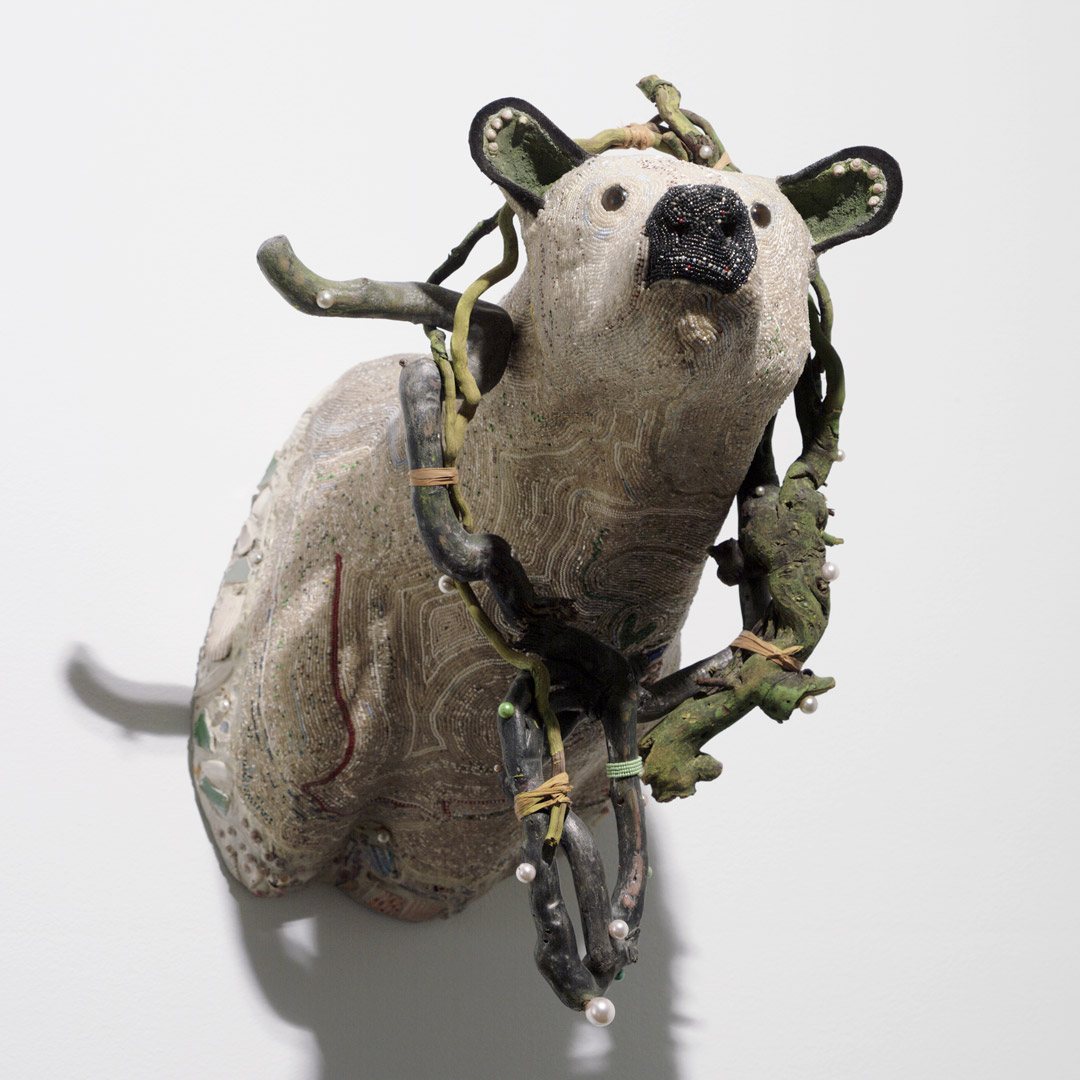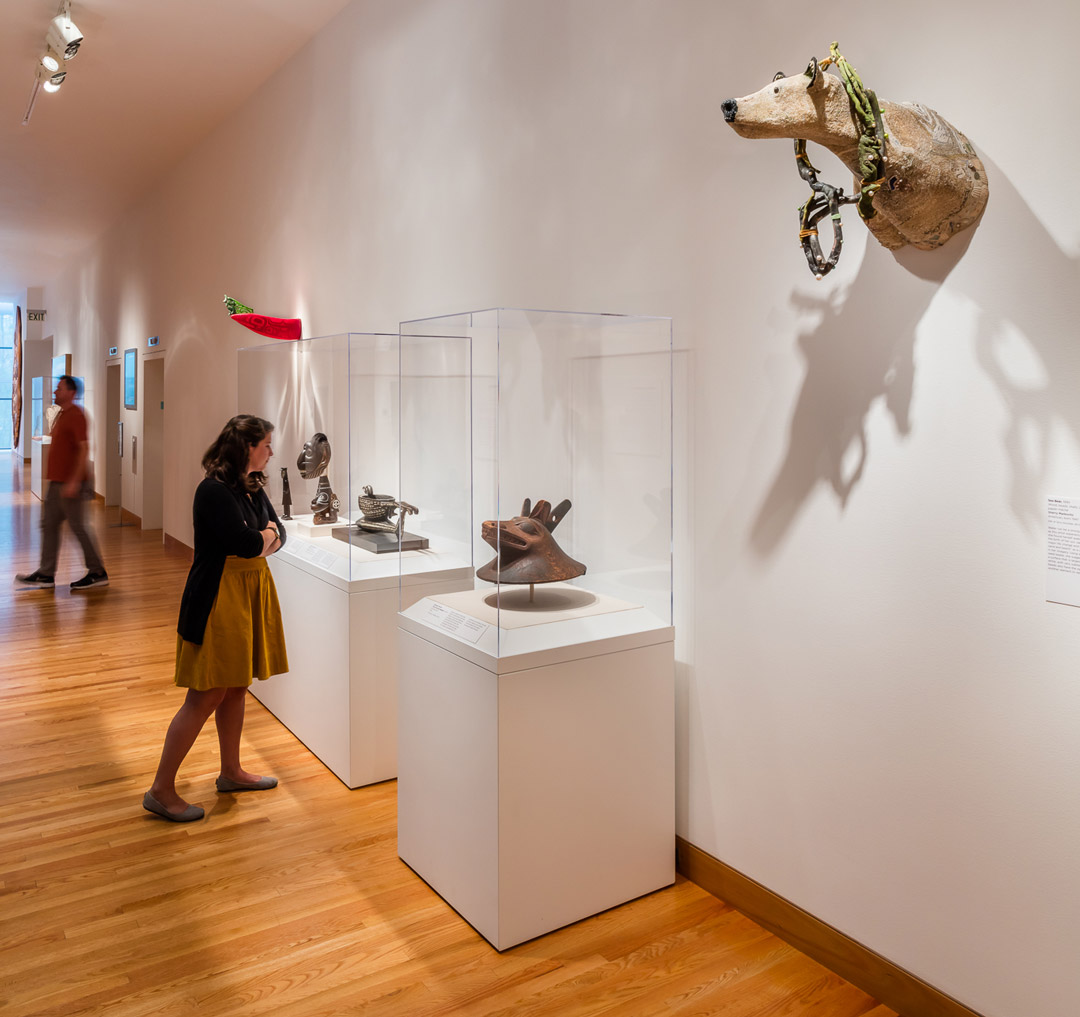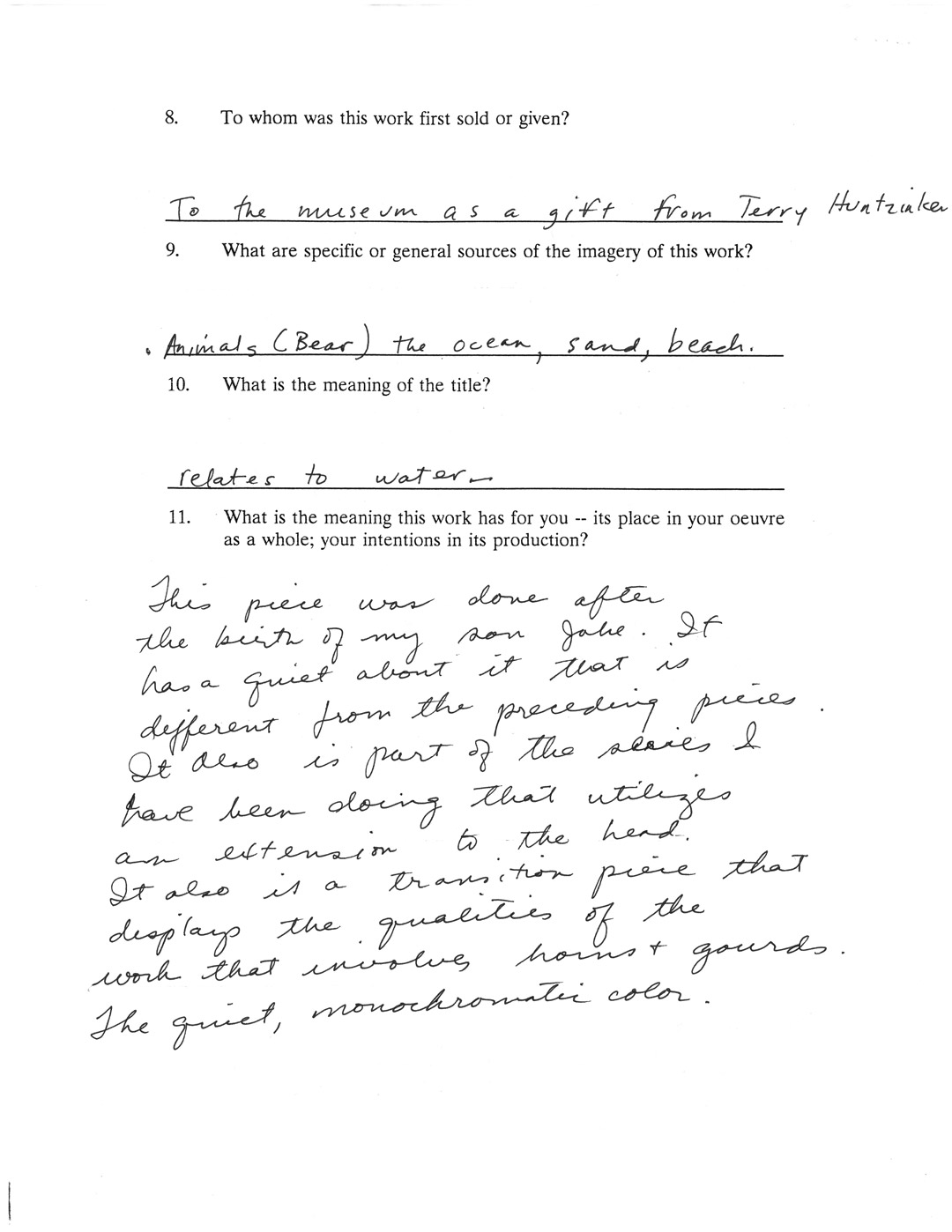Object of the Week: Sea Bear

We who love art find joy in putting words to what artists are doing visually. Scholarly articles and Instagram posts, Ph.D. dissertations and dinnertime monologues, poetry and pop music are all common sites for reflecting on the ideas impressed upon us by visual art. However much we enjoy sharing our own angle, we should designate the greatest respect for the words artists share about their own work. They are often, in themselves, a kind of poetry.

Along with a few images of this week’s object, Sea Bear, by Seattle artist Sherry Markovitz, here’s a selection of thoughts from the artist on her work and this resplendent piece:
I am after beauty, with an edge of uncertainty, vulnerability, and power. I use animal metaphors to explore issues of intimacy, closeness, and separation.1
Immersing myself in work and making objects is a way of setting boundaries and losing them at the same time.2
This piece was done after the birth of my son Jake. It has a quiet about it that is different from the preceding pieces. It also is part of the stories I have been doing that utilizes an extension to the head. It also is a transition piece that displays the qualities of the work that involves horns & gourds.
The quiet, monochromatic color.
I see the ‘collar’ as directional. The wood shape & the bear shape—working in tandem was the key (formally) on this one. I think the large pearls pulled the shape back to the bear. It’s funny, as I get further away from a piece, it is, in fact, the abstract concerns that remain the most visible to me.
Emotionally Sea Bear is circular, all the stuff on it is traceable to significant walks. Walks with my mother in Florida, walks in Port Townsend with Peter (during which time J was conceived), walks alone to find the ‘root’ pieces at Discovery Park. Walking on the beach is such a drifting and wonderful activity.
I feel whole at those times, and quiet.
The beadwork is a lot about getting quiet—& color—the beauty of the colored glass. Muting it somewhat on Sea Bear—making it more sand like and solid. How pieces lay in the sand—3
I have several strong personal influences: my family of origin, whose psychodynamics have been a continual source of reference; my partner, whose vision, optimism, and endurance keep everything in fresh perspective; and the late Emil Gehrke, a folk artist of Grand Coulee, Washington, who taught me that art could be about joy and totality.4
I work as hard as I can. I set no limits on how or when I work. My limit is exhaustion.5

– Jeffrey Carlson, SAM Collections Coordinator